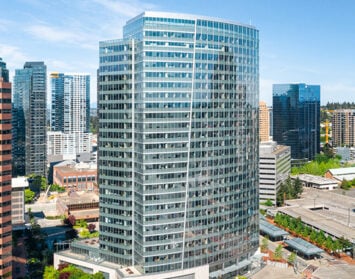Short of which contestants are being voted off “American Idol” each week, the most pressing domestic issue in the news these days is the distressed condition of the real estate and mortgage markets.
Real estate agents, mortgage brokers, escrow and title insurance officers are pursuing telemarketing and other lines of work by the hundreds, if not thousands. If the trend continues in the growth of vacant and available office space, we’re liable to see growing numbers of landlords giving rats and crickets ticker-tape parades to celebrate the only living creatures to inhabit their spaces.
While economists and politicians may squabble over how to describe the state of the economy, the fact is the real estate industry shows all the markings of a classic recession. Businesses are closing their doors and moving out of retail and office spaces in near-record numbers. The fact is occupancy patterns are a major indicator of our region’s economic health. And, for landlords who are in the business to recruit and retain office space users, the signs aren’t all that good.
But you wouldn’t know it, considering the evidence I’ve seen in recent months. Just one example: Last week, I was in Northern California working on a deal for a client who wants to renew a 50,000-square-foot space for 10 years. It was difficult enough dealing with the landlord’s bloated notion as to what the lease renewal rate should be; but the negotiations became that much more challenging when the client proclaimed aloud, within earshot of the landlord, that he really wanted to stay in the existing space and not have to endure the painful process of moving.
That was a careless error on the part of the tenant because it tied one hand behind my back as the tenant’s leasing broker. The very first chapter in any negotiations textbook teaches that you must communicate that you are perfectly willing to walk away from a deal in order to receive fair treatment and any chance of a good outcome. Parties who do so increase the chances of getting a good deal by a million percent, figuratively speaking.
The question is what should a tenant do when faced with a very aggressive landlord who appears unwilling to treat the tenant like the valuable customer he is?
A couple of things come to mind, beginning with showing the landlord a recent array of news clippings that gleefully report downward economic indicators almost daily. One cannot pick up a newspaper without seeing at least one prominently placed story heralding the woes of the real estate market and those in it. Show the landlord the evidence that space users are either shutting their doors or severely cutting back their payrolls, which impact their need for space. The building owner needs to know that you know it’s not a building owner’s market these days and that it’s unlikely things will change in the foreseeable future.
Back to my client’s situation up north. While there, I took occasion to re-walk his company’s existing space and estimated that we could easily reduce his existing space requirement by at least 20 percent; from 50,000 to 40,000 square feet — maybe even a bigger reduction. Ironically, while the landlord is trying to increase the renewal rent by 25 percent — from $2 to $2.50 per square foot – I told the client he can cut his space needs by 20 percent without having any adverse effect on productivity.
The unnecessary space the client will be returning to the landlord is very unappealing; it likely will take several years and a significant tenant improvement allowance to release to a new user. Meanwhile, I can likely get a new 10-year lease for the client at the same monthly rental rate they had been paying over the past 10 years. Taking into account the reduced space needs, the client would actually pay less over the next 10 years than he did the past comparable period.
The sad fact is landlords know that 80 percent of their tenants renew their leases, typically under terms and conditions dictated by the landlord.
So, the lesson is this: tenants shouldn’t “drink the landlord’s Kool Aid” by taking the path of least resistance when renewing a lease. Tenants need to look around at other options elsewhere. Just because a tenant has 10,000 square feet in one building doesn’t mean he or she would need the same amount of space in another locale. Building efficiencies differ significantly. It’s entirely possible that tenant may only need 8,000 square feet in a more efficient building.
The other advantage, oddly enough, is that landlords typically treat prospective and new clients better than they do their existing customers when negotiating lease terms. Beats me as to why they tend to undervalue their proven clients. But it’s true nonetheless.
I’ve been able to take advantage of all these factors on behalf of many clients by finding them better deals elsewhere when their landlords have forgotten who their clients really are.
Jason Hughes is founder of Hughes Marino, an award-winning commercial real estate company with offices across the nation. A pioneer in the field of tenant representation, Jason has exclusively represented tenants and buyers for more than 30 years. Contact Jason at 1-844-662-6635 or jason@hughesmarino.com to learn more.









